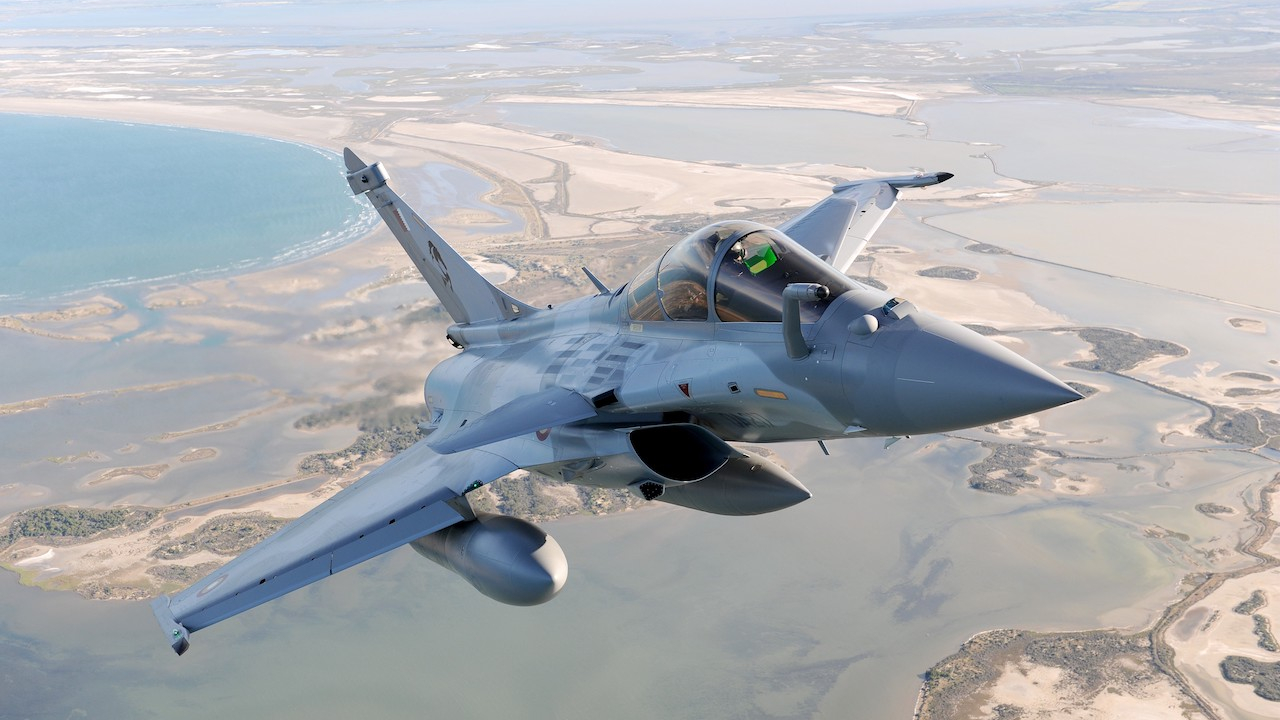All Systems are go!
The close links between the UK's aerospace industry and the Middle East are nowhere more apparent than through BAE Systems. Jon Lake takes a look at the ties with the defence manufacturer.

BAE Systems and its predecessor companies have had a presence in the Middle East market since before the Second World War and the company takes some pride in the fact that its Arab air force customers have flown aircraft like the Spitfire, Vampire, Meteor, Hunter, and Lighting fighters, and trainers like the Chipmunk, and Strikemaster, as well as a host of transport and support aircraft.
The company has also long had an extensive footprint in the region, providing maintenance, engineering, logistics support, training and other services, including significant numbers of contract aircrew.
While Saudi Arabia is BAE’s biggest regional customer, the company also has a presence in Bahrain , Egypt, Israel, Jordan, Kuwait, Oman, Qatar and the UAE. Last year, it opened a full office in the Hashemite Kingdom of Jordan, complementing the network of offices the company operates across the Middle East and Africa. The new office is to be used as the focal point for the company’s business in Jordan and in neighbouring countries, including collaborative activities with the King Abdullah Design and Development Bureau (KADDB).
BAE is still associated in the public mind with aeroplanes, though the company is now the largest defence company in Europe and is ranked number two in the world, so its activities are far more diverse and wide-ranging. The three most important of its aircraft products in service in the region are the Hawk, the Tornado and the Typhoon.
BAE’s Hawk trainer remains in service in large numbers in Bahrain, Oman, Saudi Arabia, and the UAE. At previous Farnborough Air Shows, the company outlined plans for an ambitious upgrade to earlier Hawk variants. Many saw this as having been aimed in part at Saudi requirements and at the UAE, whose air force seems to have some need to retain its Hawk fleet, even after the newly-selected (but still not ordered, and much-delayed) Aermacchi M-346 Master trainer finally enters service. But BAE sources suggest that the emphasis of Hawk marketing has shifted back to new-build aircraft, both in the Middle East and in countries like Poland, where an upgrade to ex-Finnish Air Force Hawk aircraft was once thought to be a strong contender.
Large numbers of BAE-supplied Panavia Tornado tactical fighters form the backbone of the Royal Saudi Air Force’s offensive capability and are undergoing a major upgrade in-country. In November 2009 Saudi Tornados hit the headlines when they participated in air strikes aimed against rebel Shiite Hawthi forces in neighbouring Yemen, following the killing of a Saudi soldier on the border.
The new Eurofighter Typhoon is in service in Saudi Arabia and eight single-seat aircraft and two two-seaters have already been delivered, of a total of 72 aircraft on order. The first 24 of these are being built in the
The Typhoon seems likely to gain further customers in the region and an imminent UK/Oman government-to-government deal to supply about 16 aircraft to the Royal Air Force of Oman has already been widely reported.
But even for the company’s Military Air Solutions division, BAE’s product range extends beyond traditional manned aircraft and the company now proudly boasts to be leading technology development in the Unmanned Autonomous Air Systems (UAS) sector.
Innovative products like the Herti (operationally proven by the UK RAF in Iraq and Afghanistan) and Mantis are already flying, and the company has even more advanced systems under development. And though Peter Anstiss, a BAE board member whose portfolio of responsibilities includes that of business development director for BAE Systems’ Military Air Solutions division, admits that: “there is a lot of regulatory work that is needed, not just in the Middle East but around the world”, before unmanned systems can reach their fullest potential, he is convinced that they represent: “the future of aerospace”.
But the company is about more than selling aircraft, whether manned or unmanned, as Anstiss explained: “BAE Systems has been able to forge long-term relationships with countries across the region through our military aircraft programmes and we are now actively looking to further our strategy of industrial collaboration in the region, focusing on through-life capability, which will facilitate a sharing and transfer of knowledge and skills between countries.”
BAE Systems’ operations in
The proportion and number of local nationals employed by BAE is growing year-on-year, such that Saudi nationals now account for about 2,450 people, or just over half of the total BAE Systems’ workforce in Saudi Arabia. This makes BAE Systems one of the largest private sector employers of Saudi nationals.
But local industrial collaboration extends beyond local work on BAE-supplied aircraft in service in the region, and beyond increasing local employment on existing in-country activities. BAE Systems has, for example, been awarded a five-year £150m contract by Eurofighter GmbH to provide an avionic equipment repair support service in the region, which will support the domestic Typhoon fleets in the air forces of Germany, Spain and the UK.
The company’s Regional Aircraft Division’s Asset Management business has also won an exclusive mandate from an unnamed Middle East operator to remarket a GE CF6-80C2B7F-powered Boeing 767-300ER wide-body airliner. This aircraft is being marketed to a wide range of potential buyers and lessors, including existing Boeing 767 customers, and to operators who have ordered next generation Boeing 787s or Airbus A350XWB but who need interim capacity until these delayed aircraft are delivered, as well as into the freight and VIP conversion markets.
The company is also placing a growing emphasis on non-aerospace activities, including the sale and modification of military and commercial armoured and unarmoured vehicles and systems integration for homeland security and other areas.
BAE today is a global organisation with an incredibly diverse range of activities. No wonder it doesn’t like being called British Aerospace.
Stay up to date
Subscribe to the free Times Aerospace newsletter and receive the latest content every week. We'll never share your email address.

